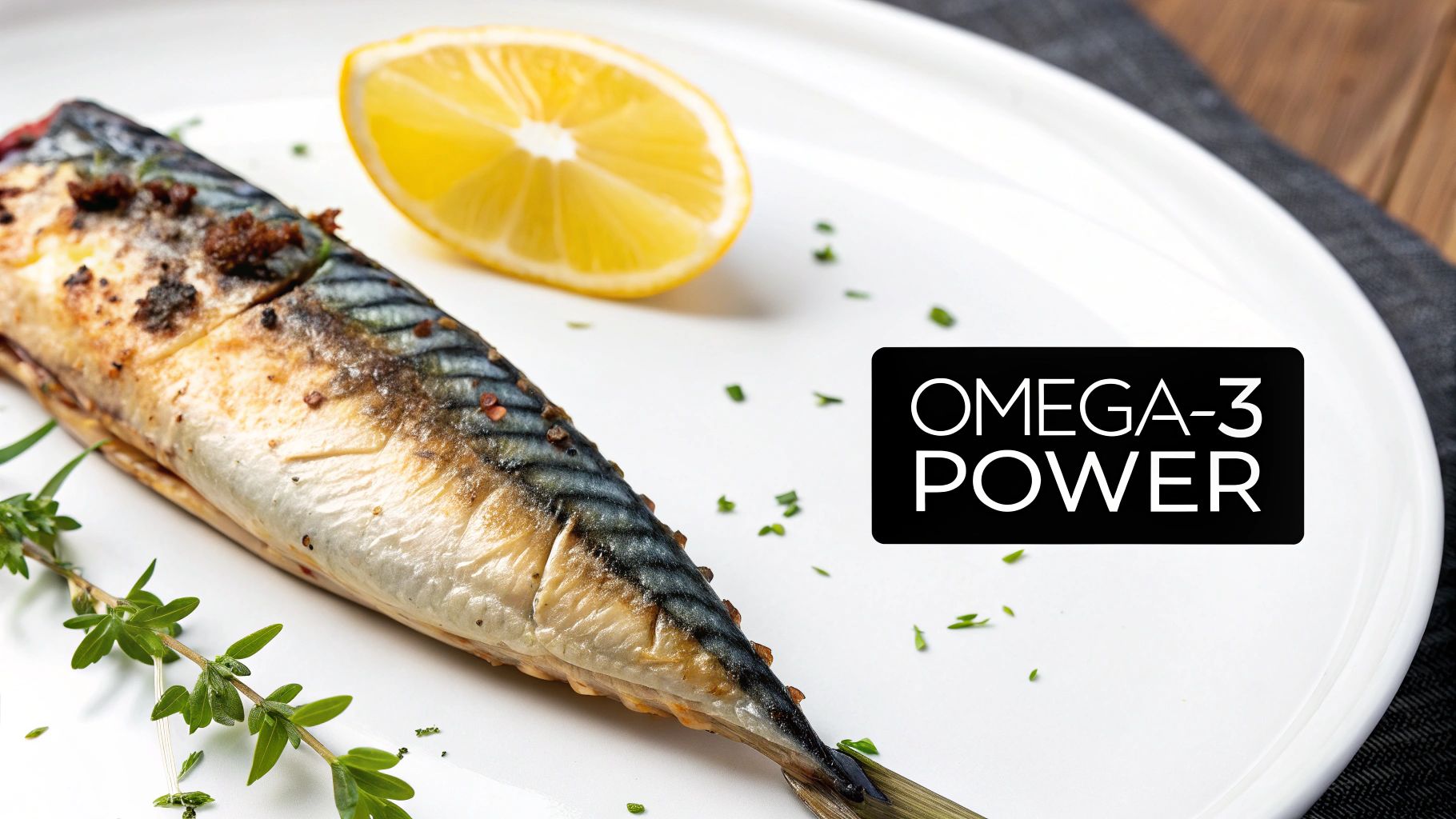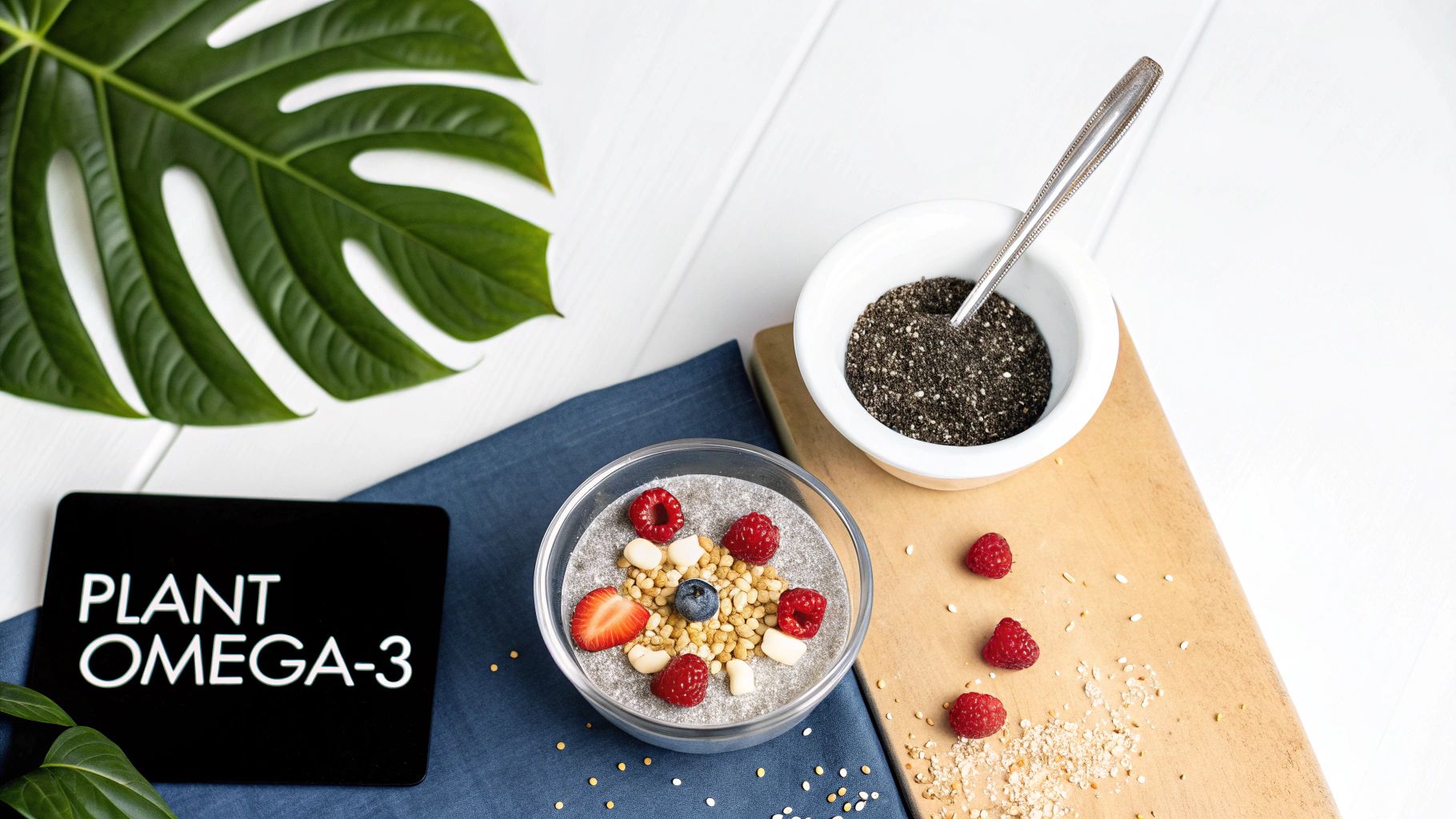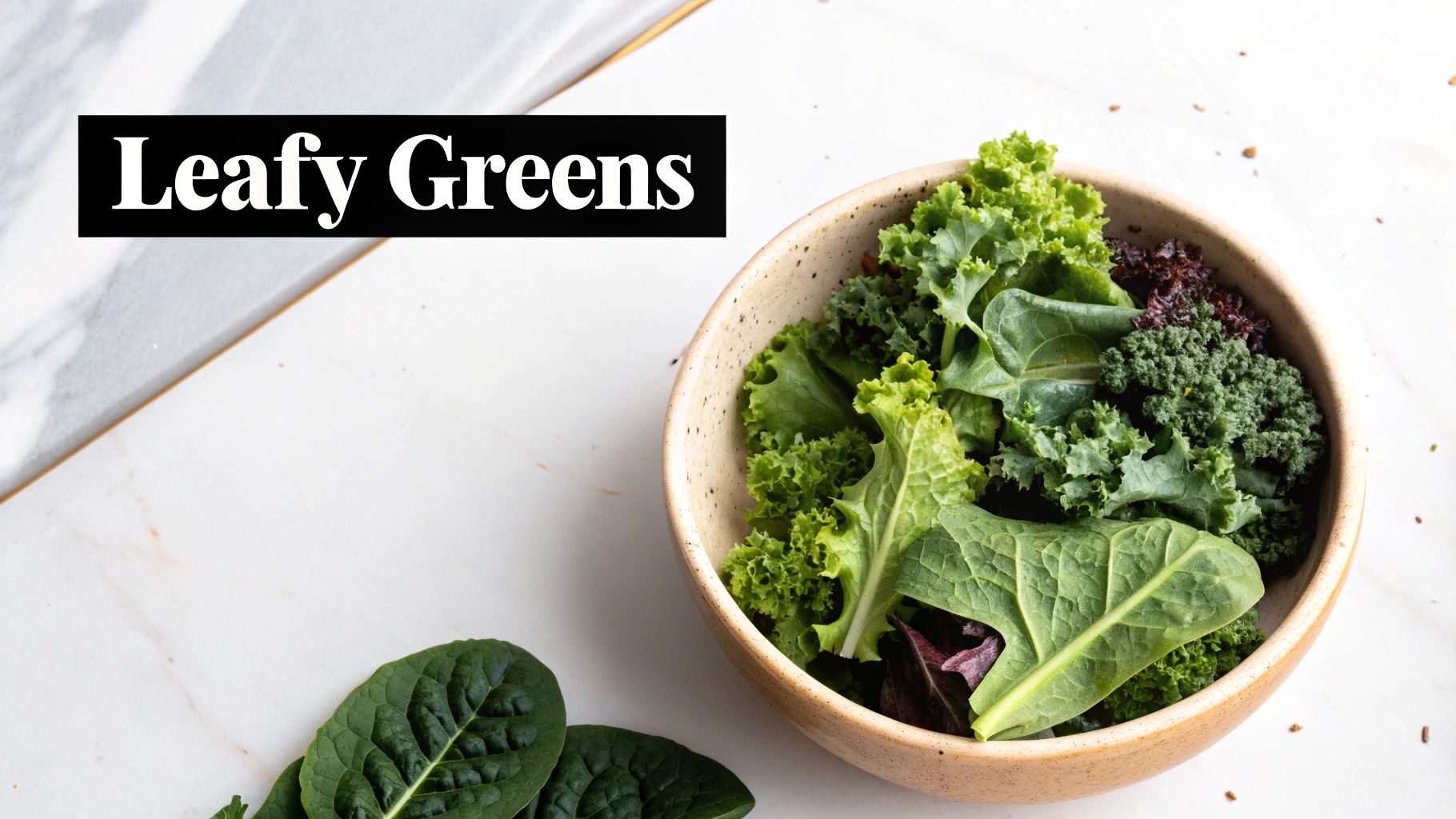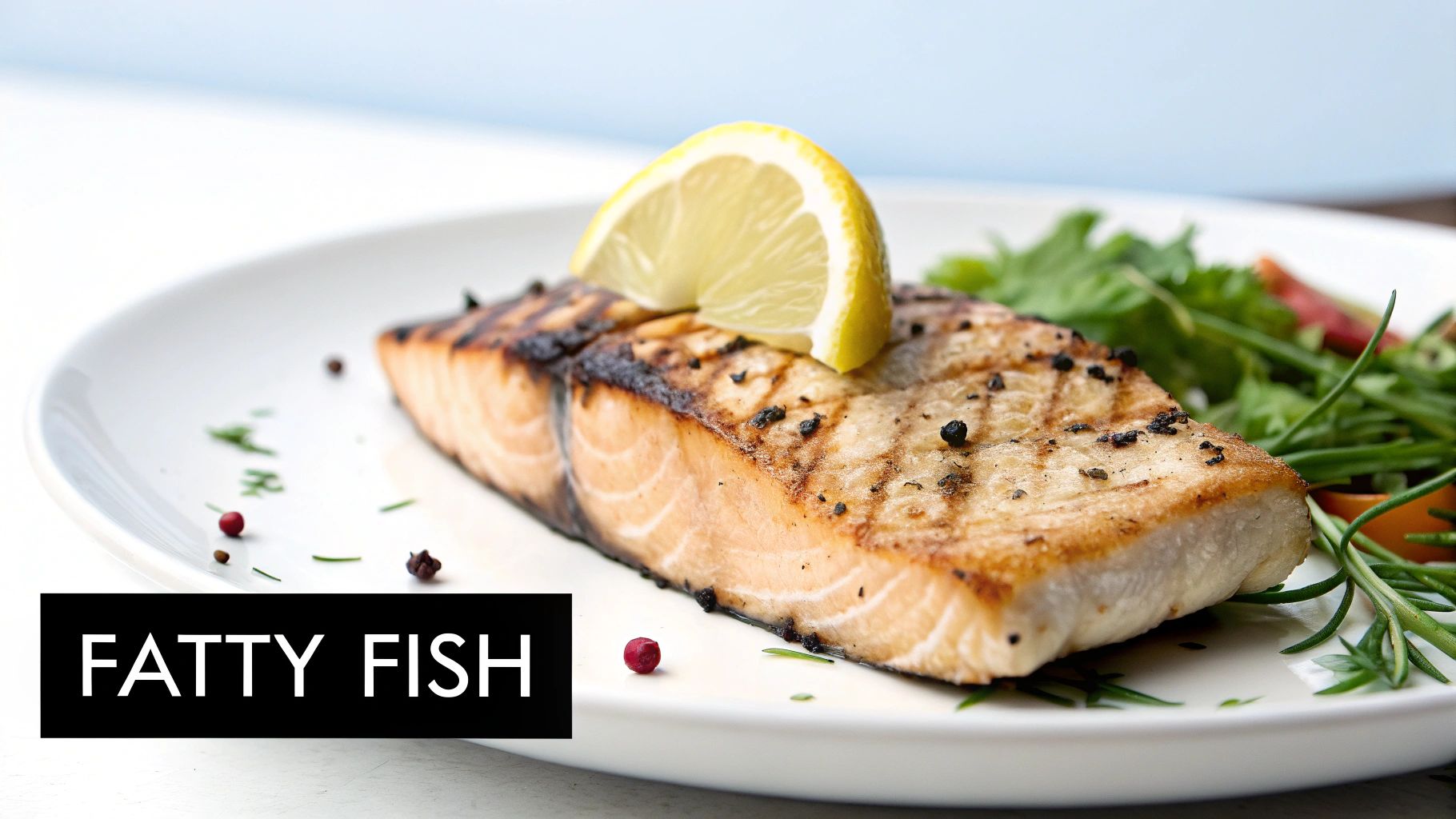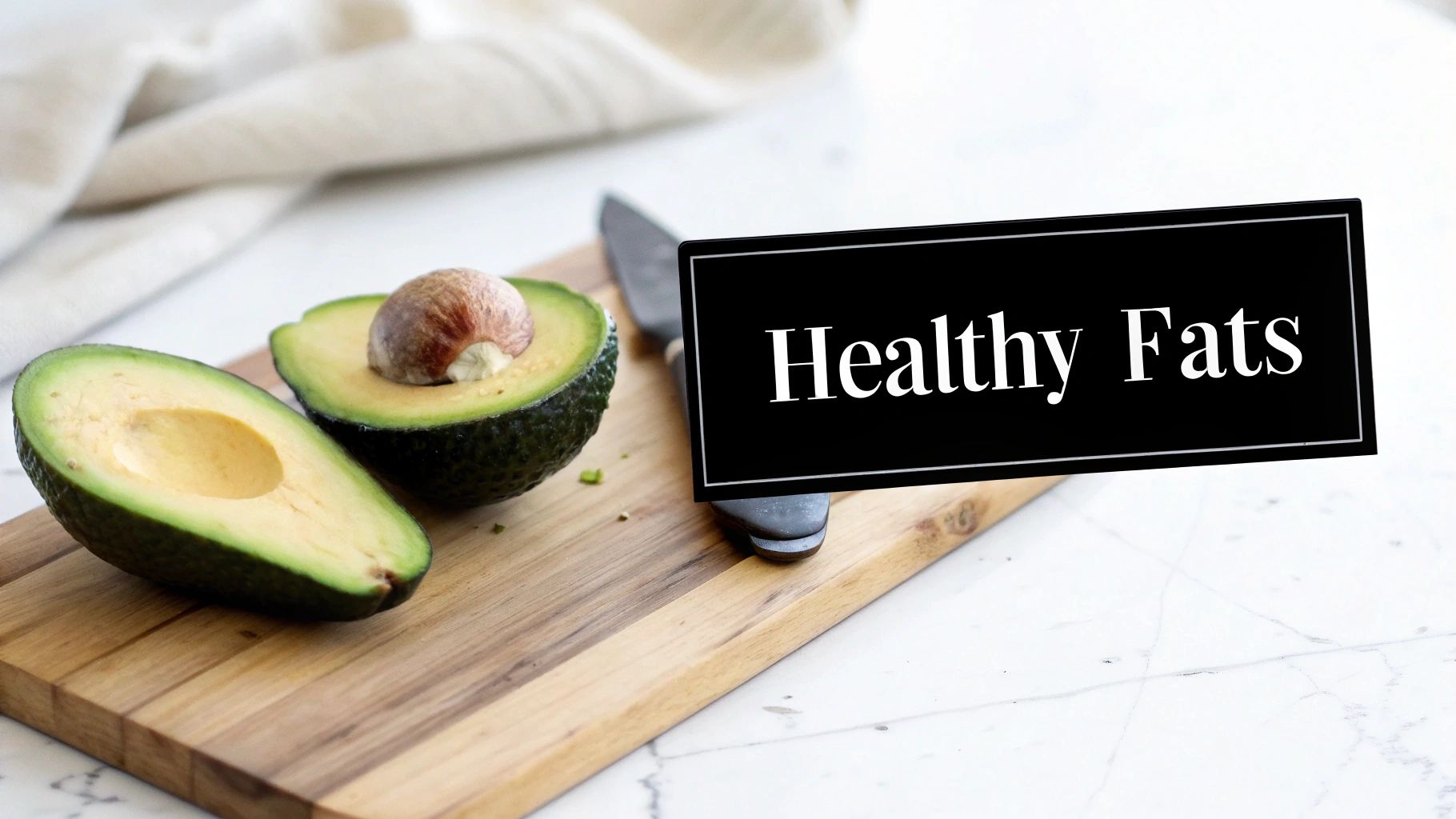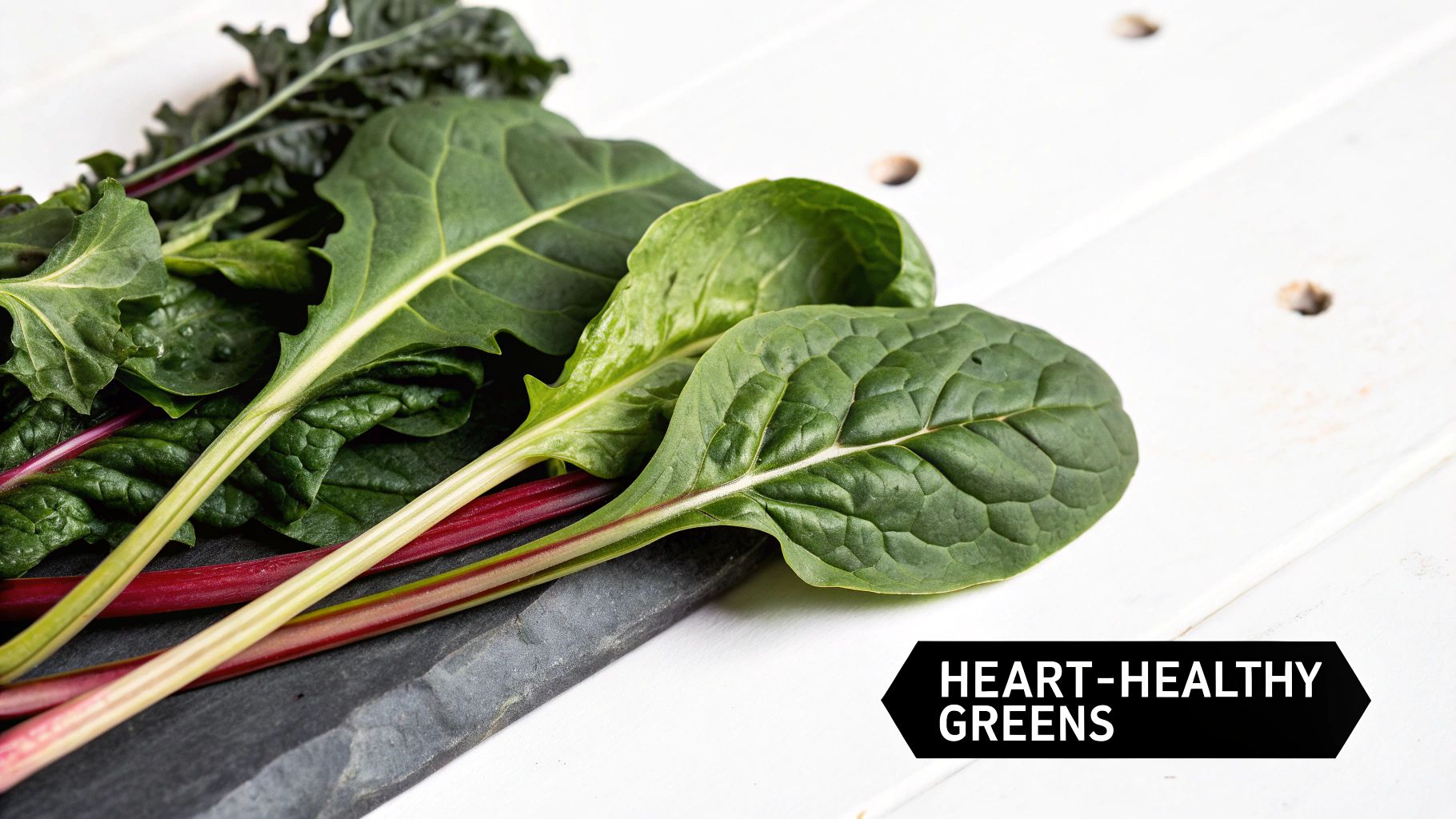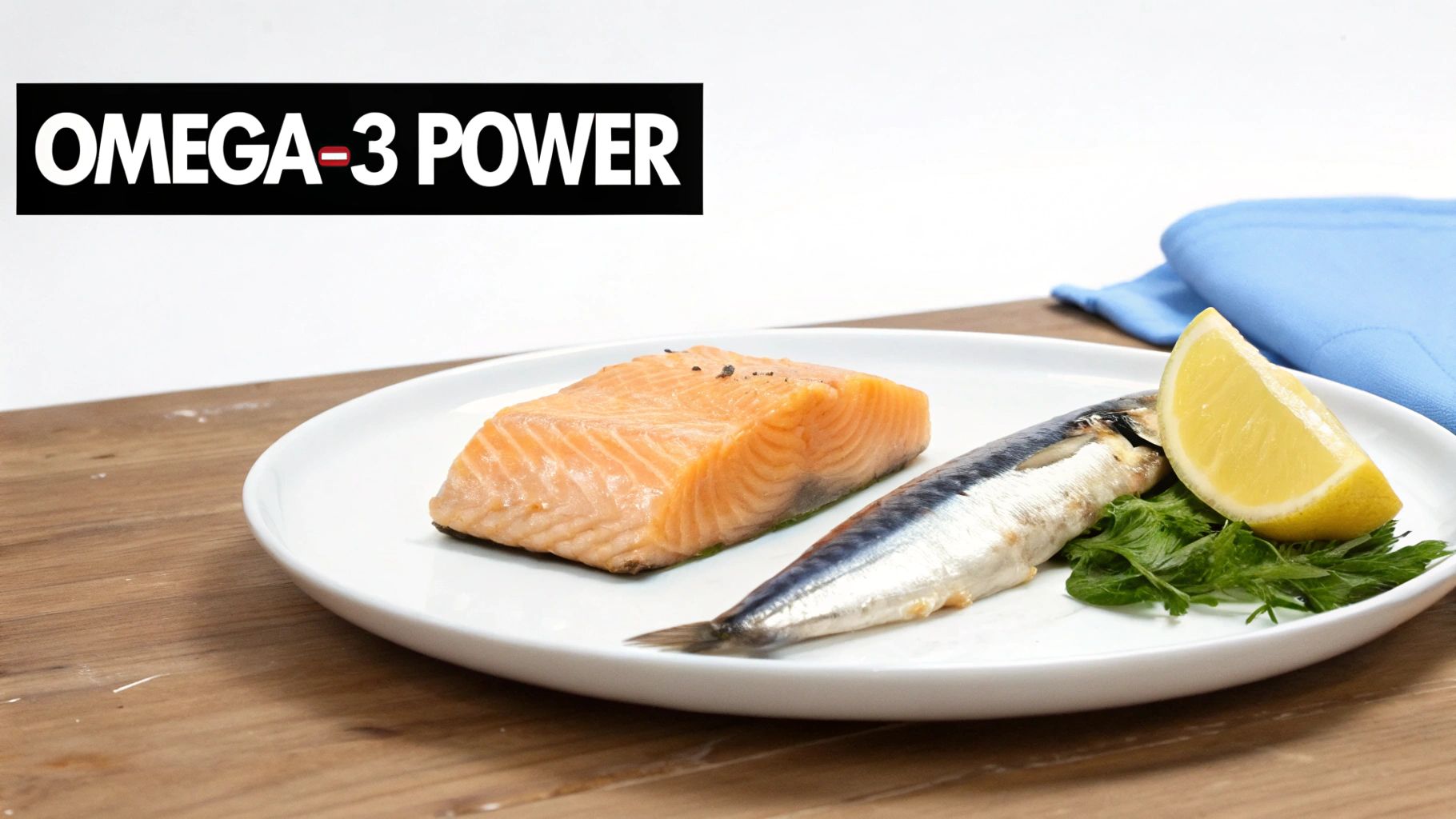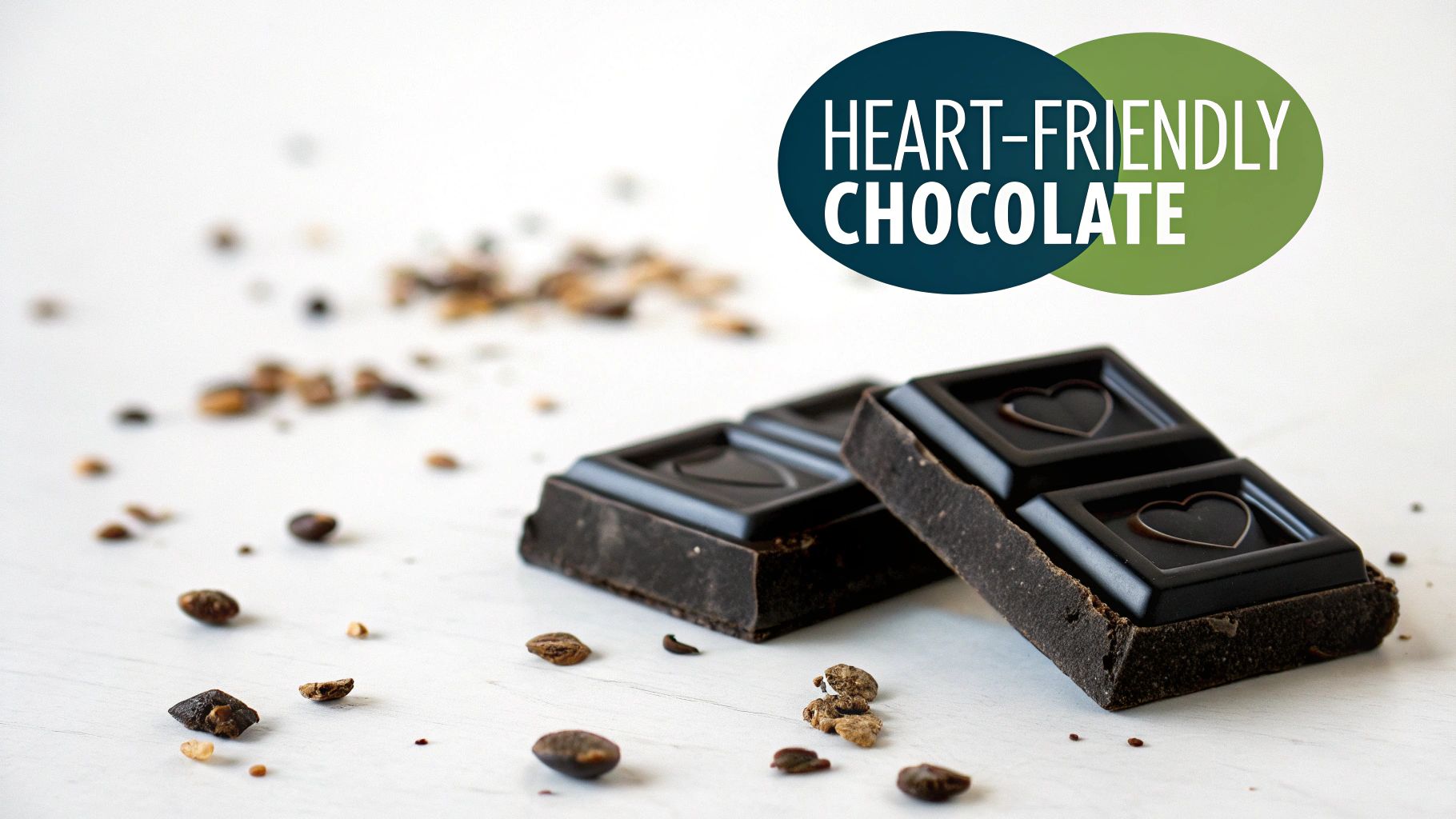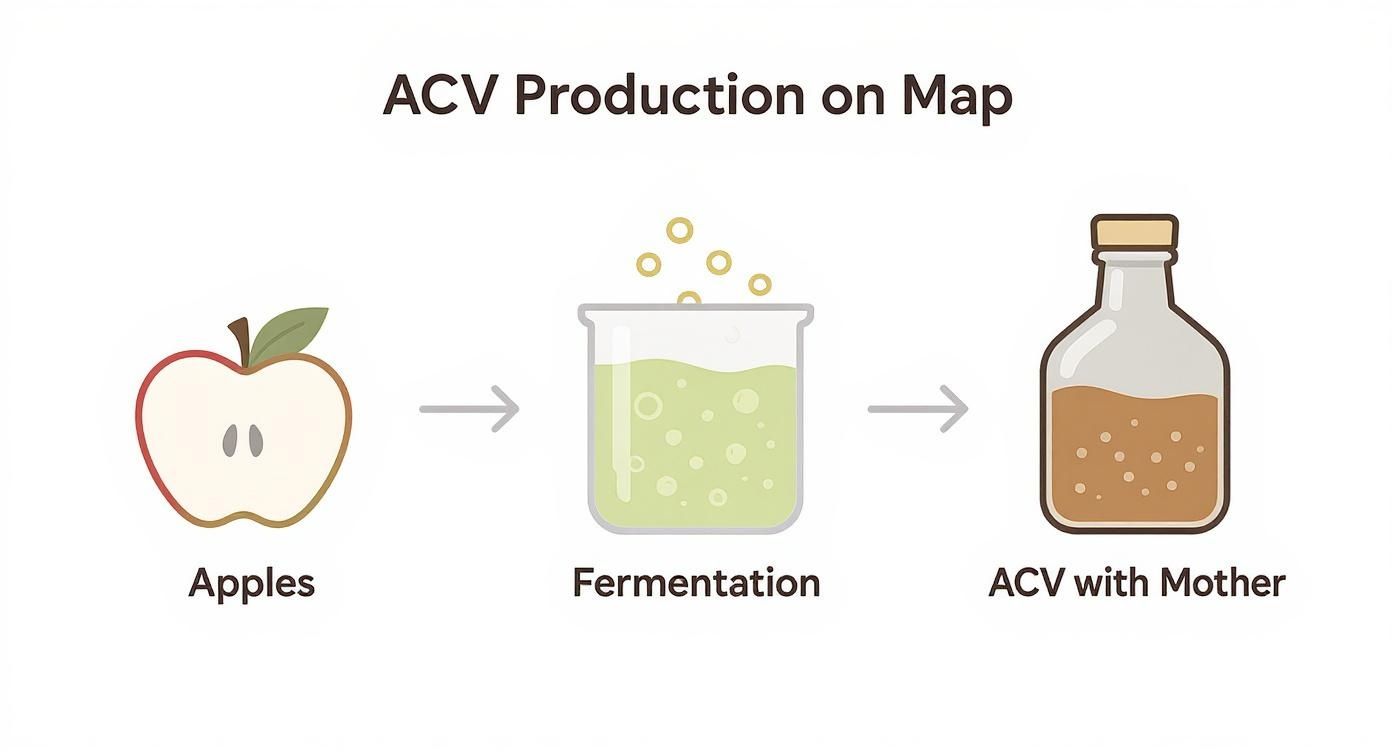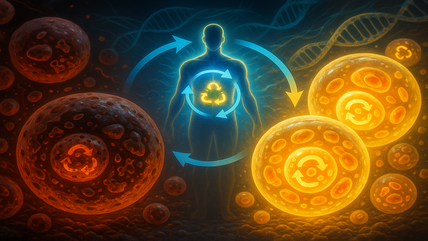The quest for optimal health often leads down complex paths, but what if the most significant leverage point was right inside you? Welcome to the world of your gut microbiome, a bustling ecosystem of trillions of microorganisms residing in your digestive tract. This internal community influences everything from nutrient absorption and immune function to mood regulation and long-term disease risk. In a world of conflicting dietary advice, focusing on nourishing this internal garden is one of the most powerful, science-backed strategies for enhancing your overall well-being.
This guide moves beyond generic tips to provide a definitive, actionable list of the best foods for gut health. We’ll break down precisely why specific foods like kimchi, polyphenol-rich berries, and resistant starches are so effective. You will learn not just what to eat, but also the mechanisms behind their benefits, from feeding beneficial bacteria to strengthening the gut lining.
Prepare to transform your understanding of food. Instead of viewing it as simple fuel, you'll see it as a powerful tool for cultivating a thriving internal ecosystem. Each section offers practical ways to incorporate these foods into your daily routine, along with crucial considerations for sensitivities like FODMAPs. This list is your roadmap to supporting digestive wellness, enhancing immunity, and unlocking a new level of health, one delicious and strategic bite at a time.
1. Fermented Foods (Kimchi, Sauerkraut, Tempeh)
Fermented foods are nutritional powerhouses, transformed by a process called lacto-fermentation. During this process, natural bacteria, like various Lactobacillus species, feed on the sugar and starch in the food, creating lactic acid. This not only preserves the food but also creates a wealth of beneficial enzymes, B-vitamins, and various strains of probiotics.
Consuming these foods directly introduces beneficial live microorganisms into your digestive tract. These probiotics help reinforce the population of good bacteria in your gut, improving digestion, enhancing nutrient absorption, and supporting a robust immune system. This makes them one of the absolute best foods for gut health you can incorporate into your diet.
How to Incorporate Fermented Foods
Start slowly to allow your gut to adjust. A tablespoon or two per day is a great starting point.
- Choose Wisely: Look for unpasteurized or "live culture" products in the refrigerated section of your grocery store. Pasteurization kills the beneficial bacteria.
- Time it Right: Add fermented foods like sauerkraut or kimchi to your plate after cooking to preserve their probiotic content. Heat can destroy these delicate microorganisms.
- Variety is Key: Different fermented foods contain different probiotic strains. Rotate between kimchi, sauerkraut, kefir, kombucha, and tempeh to diversify your gut microbiome.
Expert Tip: Making your own sauerkraut is simple and cost-effective. All you need is cabbage, salt, and a glass jar. This ensures a raw, unpasteurized product teeming with beneficial microbes.
Who Should Be Cautious?
While incredibly beneficial for most, some individuals should be mindful. Fermented foods are often high in histamines, which can trigger symptoms in people with histamine intolerance. Additionally, many, like kimchi and sauerkraut, are high in FODMAPs (specifically mannitol), which can cause digestive distress for those with IBS. If you have a compromised immune system, consult your doctor before adding large amounts of live-culture foods to your diet.
2. Dietary Fiber (Soluble & Insoluble) and PHGG (Partially Hydrolyzed Guar Gum)
Dietary fiber is a type of carbohydrate that your body can't digest. Instead of being broken down, it passes through your digestive system, acting as a crucial food source for the beneficial bacteria residing in your colon. These microbes ferment the fiber, producing short-chain fatty acids (SCFAs) like butyrate, which nourish your colon cells, reduce inflammation, and support overall gut barrier function.
There are two main types: soluble fiber (oats, apples, beans), which forms a gel-like substance, and insoluble fiber (whole wheat, nuts, cauliflower), which adds bulk to stool. A balanced intake of both is fundamental for digestive regularity and a thriving microbiome, which is why high-fiber options are considered some of the best foods for gut health. For those needing a gentle, well-tolerated boost, Partially Hydrolyzed Guar Gum (PHGG) is a soluble fiber supplement that ferments slowly, minimizing gas and bloating.
How to Incorporate Dietary Fiber
Introduce fiber slowly over several weeks to prevent digestive discomfort. Adequate water intake is essential to help fiber do its job effectively.
- Go Gradually: Add one new high-fiber food every few days. For a structured approach, check out this guide to a high-fiber eating plan on healthdigest.blog.
- Drink Plenty of Water: Aim for at least 8-10 glasses of water daily. Fiber absorbs water, and without enough fluid, it can worsen constipation.
- Supplement Smartly: If using a supplement like PHGG, start with a small dose (e.g., 3 grams) and mix it into a beverage. Take it at least two hours apart from medications, as it can slow their absorption.
Expert Tip: Focus on whole-food sources of fiber first. Foods like berries, legumes, and whole grains provide not only fiber but also a wide array of vitamins, minerals, and antioxidant polyphenols that further support your gut microbes.
Who Should Be Cautious?
While beneficial for most, a rapid increase in fiber can cause gas, bloating, and cramping. Individuals with certain digestive conditions, such as Irritable Bowel Syndrome (IBS) or Inflammatory Bowel Disease (IBD) like Crohn's disease, may need to be selective about the types of fiber they consume. High-FODMAP fibers found in foods like wheat, onions, and beans can trigger symptoms in sensitive people. If you have a condition like gastroparesis, it is critical to consult your doctor before significantly increasing your fiber intake.
3. Bone Broth
Bone broth is a nutrient-dense liquid made by simmering animal bones and connective tissues for an extended period. This slow-simmering process extracts beneficial compounds like collagen, which breaks down into gelatin, and amino acids such as glutamine, proline, and glycine. It also releases easily absorbable minerals like calcium, magnesium, and phosphorus.

The key to its gut-healing reputation lies in these components. Glutamine, in particular, serves as a primary fuel source for the cells lining the intestines, helping to maintain the integrity of the gut barrier. Gelatin can help restore a healthy mucosal lining and combat inflammation, making bone broth one of the most soothing and restorative best foods for gut health, especially for a compromised or irritated digestive system.
How to Incorporate Bone Broth
You can sip it warm on its own or use it as a base for soups, stews, and sauces.
- Choose Wisely: Opt for bone broth made from grass-fed, pasture-raised animals to maximize nutrient density and avoid potential contaminants. Check labels for low sodium and no artificial additives.
- Time it Right: Drinking a warm cup of bone broth on an empty stomach, such as in the morning or between meals, may enhance the absorption of its amino acids and soothe the gut lining directly.
- Variety is Key: Different animal sources offer slightly different nutritional profiles. Rotate between beef, chicken, turkey, and even fish bone broth to get a wider array of amino acids and minerals.
Expert Tip: To maximize mineral extraction when making bone broth at home, add a splash of apple cider vinegar to the pot at the beginning of the cooking process. The acid helps break down the connective tissue and bones, releasing more nutrients into the broth.
Who Should Be Cautious?
While generally well-tolerated, bone broth can be high in histamines, which may cause reactions in individuals with histamine intolerance. Additionally, because glutamine can be converted to glutamate, those with a sensitivity to MSG or glutamate might experience adverse effects like headaches. If you are following a low-FODMAP diet, be mindful of broths made with high-FODMAP ingredients like onions and garlic.
4. Polyphenol-Rich Foods (Berries, Green Tea, Dark Chocolate)
Polyphenols are naturally occurring micronutrients packed with antioxidant properties found in plants. While beneficial for the entire body, they have a unique and powerful relationship with our gut microbiome. Because they are poorly absorbed in the small intestine, a large portion of the polyphenols we consume travel intact to the colon. There, they act as fuel for beneficial bacteria like Akkermansia muciniphila and Bifidobacterium.
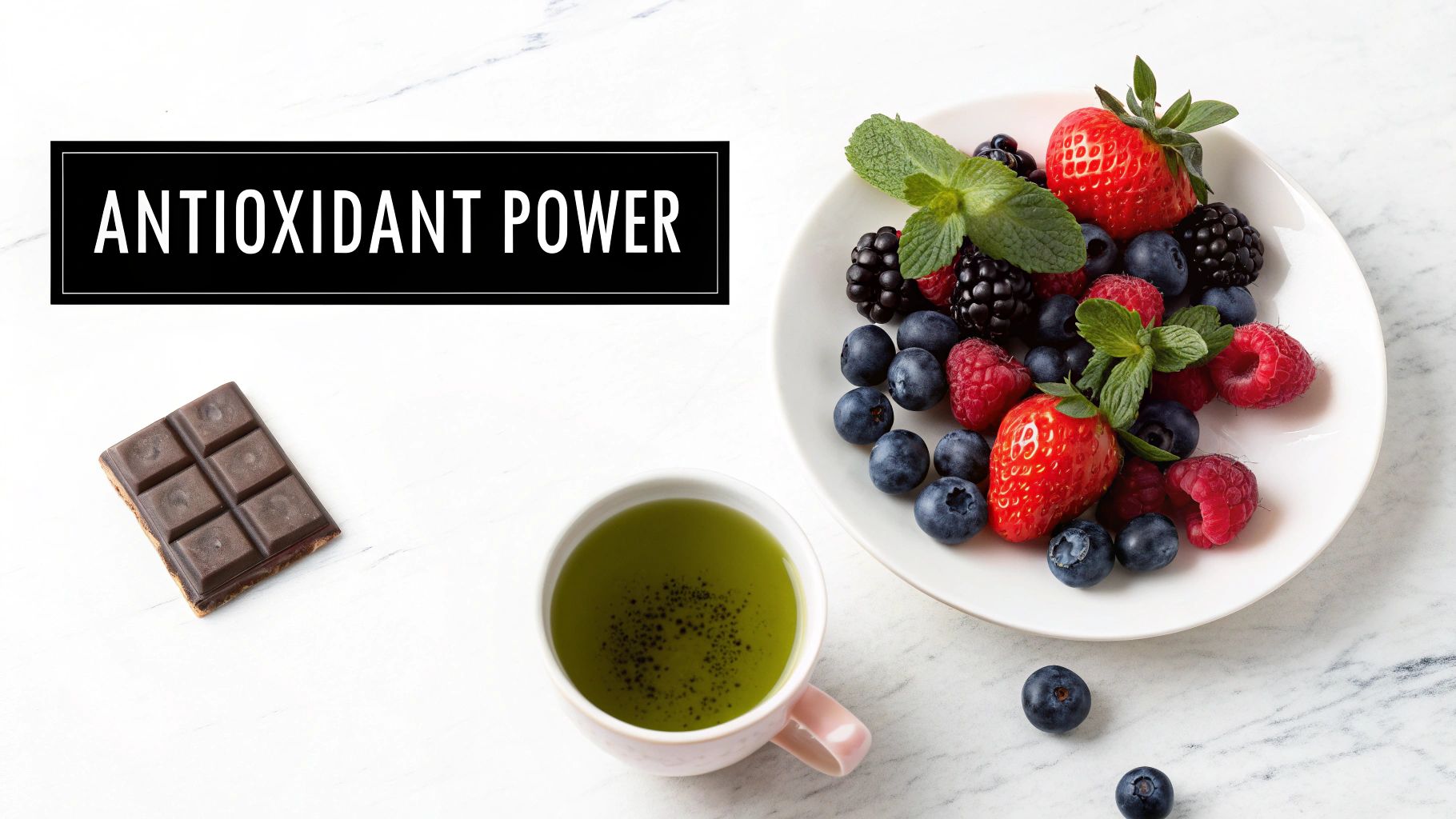
This microbial metabolism converts polyphenols into other bioactive compounds that help reduce inflammation, strengthen the intestinal barrier, and inhibit the growth of less desirable gut microbes. This makes vibrant, colorful plant foods one of the best foods for gut health, promoting a resilient and diverse microbial ecosystem.
How to Incorporate Polyphenol-Rich Foods
Aim to include a variety of colorful plant foods in your diet daily to feed different types of beneficial bacteria.
- Eat the Rainbow: Different colors in fruits and vegetables often signify different types of polyphenols. Aim to consume a wide array, from deep-purple blackberries and red pomegranates to green tea and dark brown chocolate.
- Brew it Right: To maximize the polyphenol extraction from green or black tea, steep it for at least 3-5 minutes in hot (not boiling) water.
- Go Dark: When choosing chocolate, opt for varieties with 70% cacao or higher. The higher the cacao percentage, the greater the polyphenol content and the lower the sugar.
Expert Tip: Combining polyphenol sources with a source of healthy fat, like drizzling extra virgin olive oil over a spinach salad or eating nuts with dark chocolate, can enhance the absorption and bioavailability of these powerful compounds.
Who Should Be Cautious?
Polyphenol-rich foods are beneficial for almost everyone, but a few considerations exist. Certain polyphenols, such as tannins found in tea and red wine, can interfere with the absorption of iron from plant-based sources. If you have iron-deficiency anemia, it's best to consume these items between meals rather than with them. Additionally, for those sensitive to caffeine, sources like green tea, coffee, and dark chocolate should be consumed in moderation, particularly in the afternoon and evening.
5. Resistant Starch (Green Bananas, Cooled Rice, Legumes)
Resistant starch is a unique type of carbohydrate that resists digestion in your small intestine. Instead of being broken down into sugar, it travels to the large intestine where it acts as a powerful prebiotic, feeding the beneficial bacteria that reside there. This fermentation process produces short-chain fatty acids (SCFAs), most notably butyrate, which is the primary fuel source for the cells lining your colon.
By nourishing your colon cells and beneficial microbes, resistant starch helps strengthen the intestinal barrier, reduce inflammation, and improve insulin sensitivity. This makes it one of the most impactful and best foods for gut health, offering a targeted way to support the lower part of your digestive system. Prioritizing these starches is a key part of shifting from ultra-processed foods to a diet that actively builds a healthy gut. For a deeper look into this dietary shift, you can learn more about whole foods on healthdigest.blog.
How to Incorporate Resistant Starch
Introduce these foods gradually, as a sudden increase can cause temporary gas or bloating while your microbiome adjusts.
- Cook and Cool: The magic happens when certain starches are cooked and then fully cooled. Chilling potatoes, rice, or pasta for at least 12 hours in the refrigerator transforms their starches, significantly increasing the resistant starch content.
- Embrace Unripe Bananas: Green, unripe bananas and plantains are excellent raw sources. Add a piece of a green banana to a smoothie or slice it into a yogurt bowl.
- Prioritize Legumes: Beans, lentils, and chickpeas are naturally rich in resistant starch. Incorporate them into salads, soups, and side dishes.
Expert Tip: To maximize the benefits without spiking your blood sugar, pair cooled starches like potatoes or rice with a source of protein and healthy fat. This creates a balanced meal that supports both your microbiome and your metabolic health.
Who Should Be Cautious?
While beneficial for most, some people may need to be careful. Legumes and some resistant starches are high in FODMAPs, which can trigger symptoms like gas, bloating, and pain in individuals with IBS. If you have Small Intestinal Bacterial Overgrowth (SIBO), introducing large amounts of any fermentable fiber, including resistant starch, can sometimes worsen symptoms. It's best to start with very small amounts (e.g., one or two tablespoons) and increase slowly to assess your personal tolerance.
6. Cruciferous Vegetables (Broccoli, Cabbage, Brussels Sprouts)
Cruciferous vegetables, including broccoli, Brussels sprouts, and cabbage, are celebrated for their unique gut-supportive compounds. They are rich in fiber, which acts as a prebiotic to feed beneficial gut bacteria, and are packed with special sulfur-containing compounds called glucosinolates. When you chew or chop these vegetables, an enzyme reaction converts glucosinolates into bioactive compounds like sulforaphane, which has potent anti-inflammatory and antioxidant effects that support a healthy gut lining.

These compounds help modulate the gut microbiome and support the body’s natural detoxification pathways, particularly in the liver. By promoting a balanced gut environment and reducing inflammation, cruciferous vegetables stand out as some of the best foods for gut health, contributing to both digestive wellness and overall systemic health.
How to Incorporate Cruciferous Vegetables
To maximize benefits, aim for at least one serving (about one cup) daily. Proper preparation is key to unlocking their powerful nutrients.
- Chew Thoroughly: The activation of beneficial sulforaphane begins with chewing. When eating raw cruciferous vegetables like broccoli or cauliflower, be sure to chew them well.
- Steam Lightly: Overcooking can destroy the enzyme needed to form sulforaphane. Steaming for just 3-5 minutes preserves these vital compounds while making the vegetables easier to digest.
- Pair with Fat: Sulforaphane is fat-soluble. Roasting or sautéing cruciferous vegetables with a healthy fat like olive oil or avocado oil can enhance the absorption of their key nutrients.
Expert Tip: To get the most sulforaphane from cooked broccoli, try the "hack and hold" method. Chop the broccoli and let it sit for 30-40 minutes before cooking. This allows the enzyme to create the beneficial compounds before heat deactivates it.
Who Should Be Cautious?
Cruciferous vegetables are high in fiber and contain raffinose, a type of sugar that can be difficult for some people to digest, potentially leading to gas and bloating. Individuals with IBS or SIBO may need to limit their intake or consume them well-cooked in small portions. People with thyroid conditions, especially hypothyroidism, are sometimes advised to cook these vegetables thoroughly, as very high intakes of raw cruciferous vegetables can interfere with iodine uptake.
7. Omega-3 Fatty Acids (Fatty Fish, Flaxseeds, Walnuts)
Omega-3 fatty acids are a type of essential polyunsaturated fat renowned for their powerful anti-inflammatory properties. These fats, particularly eicosapentaenoic acid (EPA) and docosahexaenoic acid (DHA), play a crucial role in maintaining the integrity of the intestinal lining. By reducing systemic inflammation, they help fortify the gut barrier, preventing unwanted substances from leaking into the bloodstream.
Emerging research also indicates that omega-3s can positively influence the composition of the gut microbiome. They encourage the growth of beneficial bacteria that produce short-chain fatty acids (SCFAs) like butyrate, which is a primary fuel source for colon cells. This synergy makes omega-3-rich foods some of the best foods for gut health, supporting both the physical structure and the microbial ecosystem of your digestive tract.
How to Incorporate Omega-3 Fatty Acids
Aim for at least two servings of fatty fish per week, or daily intake of plant-based sources to meet your needs.
- Prioritize Fatty Fish: Incorporate wild-caught salmon, mackerel, sardines, and anchovies into your meals 2-3 times weekly for a direct source of EPA and DHA.
- Grind Your Seeds: The body absorbs the nutrients from flaxseeds and chia seeds more effectively when they are ground. Add a tablespoon to smoothies, oatmeal, or yogurt.
- Be Smart with Storage: Omega-3 fats are prone to oxidation. Store nuts, seeds, and their oils in a cool, dark place or the refrigerator to maintain their freshness and potency.
Expert Tip: For those following a vegetarian or vegan diet, an algae-based supplement is an excellent way to get a direct source of EPA and DHA, as the body's conversion of plant-based ALA to these active forms can be inefficient.
Who Should Be Cautious?
While generally safe and beneficial, high doses of omega-3 supplements can have a blood-thinning effect. Individuals taking anticoagulant medications like warfarin should consult their doctor before starting a high-dose supplement regimen. Additionally, some people may experience mild digestive upset, such as burping or indigestion, from fish oil supplements. Choosing an enteric-coated supplement can help mitigate these side effects.
8. Prebiotic Foods (Onions, Garlic, Asparagus, Jerusalem Artichokes)
Prebiotic foods are rich in specialized plant fibers that act as fuel for the beneficial bacteria in your gut. Unlike probiotics, which introduce new bacteria, prebiotics nourish the good bacteria you already have. These indigestible carbohydrates, such as inulin and fructooligosaccharides (FOS), bypass digestion in the small intestine and travel to the colon, where they are selectively fermented by beneficial microbes like Bifidobacteria.
This fermentation process produces short-chain fatty acids (SCFAs) like butyrate, which is a critical energy source for colon cells and helps maintain the intestinal barrier. By feeding your beneficial gut flora, you encourage them to thrive, which helps crowd out harmful bacteria and supports overall digestive wellness. This makes a diet rich in prebiotics one of the most effective ways to cultivate a balanced microbiome and a cornerstone for anyone seeking the best foods for gut health.
How to Incorporate Prebiotic Foods
A slow and steady approach is best, as a sudden increase in prebiotic fiber can cause temporary gas and bloating.
- Start Small: Begin with small servings, such as a quarter of an onion or a few asparagus spears, and gradually increase your intake over several weeks to allow your digestive system to adapt.
- Eat Raw or Lightly Cooked: The prebiotic content in foods like garlic and onions is highest when they are raw. Cooking can break down some of these beneficial fibers, so try adding them to salads or dressings.
- Diversify Your Sources: Include a wide variety of prebiotic-rich foods to feed different types of beneficial bacteria. Rotate between onions, garlic, leeks, asparagus, slightly unripe bananas, and Jerusalem artichokes. As gut health becomes even more critical with age, diversifying prebiotic intake is a key strategy. Learn more about the connection between gut health and aging here.
Expert Tip: Chicory root is one of the most concentrated sources of inulin. You can find it ground and roasted as a coffee substitute or as a powdered supplement to add to smoothies or yogurt for a powerful prebiotic boost.
Who Should Be Cautious?
While prebiotics are fantastic for most people, they are not suitable for everyone. Many prebiotic-rich foods are high in FODMAPs, which are fermentable carbohydrates that can trigger significant digestive symptoms like bloating, gas, and pain in individuals with Irritable Bowel Syndrome (IBS) or Small Intestinal Bacterial Overgrowth (SIBO). If you have been advised to follow a low-FODMAP diet, you should introduce these foods carefully under the guidance of a healthcare professional or registered dietitian.
9. Herbs and Spices (Turmeric, Ginger, Cinnamon, Oregano)
Often overlooked in discussions of gut health, culinary herbs and spices are concentrated sources of powerful plant compounds called phytonutrients. These compounds, such as curcumin in turmeric and gingerol in ginger, possess potent anti-inflammatory, antimicrobial, and antioxidant properties. They work to soothe gut inflammation, selectively inhibit the growth of harmful pathogens, and act as fuel for beneficial gut bacteria.
These spices essentially create a more favorable environment for your microbiome to thrive. By reducing inflammation and fighting off bad microbes, they allow beneficial species to flourish, which in turn strengthens the gut barrier and improves overall digestive function. This makes them a simple yet effective addition to a diet focused on the best foods for gut health.
How to Incorporate Herbs and Spices
Making herbs and spices a regular part of your meals is an easy way to boost their gut-supportive benefits.
- Boost Bioavailability: Add a pinch of black pepper whenever you use turmeric. The piperine in pepper can increase the absorption of curcumin by up to 2,000%.
- Time it Right: To preserve their delicate, heat-sensitive compounds, add fresh herbs like oregano or peppermint toward the end of the cooking process.
- Embrace Variety: Different spices offer unique benefits. Rotate between ginger for digestion, cinnamon to support blood sugar, and oregano for its antimicrobial properties to provide your gut with a diverse range of phytonutrients.
Expert Tip: Create a soothing ginger tea to aid digestion by steeping a few slices of fresh ginger root in hot water for 5-10 minutes. This simple preparation effectively extracts its beneficial compounds.
Who Should Be Cautious?
While generally safe in culinary amounts, some people should be mindful of using herbs and spices in large, concentrated doses. For instance, high amounts of turmeric or ginger may have blood-thinning effects and should be used with caution by individuals on anticoagulant medications. Some spices can also act as gut irritants for those with severe IBS or gastritis. Always consult with a healthcare provider before using spices in supplemental forms, especially if you have pre-existing health conditions or are taking medication.
10. Collagen-Containing Foods and Supplements (Bone-In Fish, Chicken Skin, Collagen Peptides)
Collagen is the most abundant protein in the body, acting as a crucial building block for skin, bones, and connective tissues, including the lining of our digestive tract. Consuming collagen-rich foods or supplements provides key amino acids like glycine, proline, and glutamine. These amino acids are essential for repairing and maintaining the integrity of the intestinal wall, helping to seal the tight junctions between intestinal cells and reduce permeability, a condition often referred to as "leaky gut."
A strong gut barrier is critical for preventing undigested food particles and pathogens from entering the bloodstream, which can trigger inflammation and immune responses. By supporting the structural integrity of the gut lining, collagen plays a vital role in soothing intestinal inflammation and promoting a healthy mucosal layer. This makes it one of the most supportive and best foods for gut health, particularly for those focused on barrier function.
How to Incorporate Collagen
Consistency is key to seeing benefits, with studies often showing results after 8-12 weeks of daily intake. A typical goal is 10-20 grams per day.
- Choose Wisely: Opt for collagen from high-quality sources, such as grass-fed bovine collagen, wild-caught marine collagen, or organic chicken bone broth. For supplements, look for hydrolyzed collagen peptides, which are more easily absorbed.
- Time it Right: Collagen peptides are versatile and can be mixed into warm or cold liquids. Add a scoop to your morning coffee, a smoothie, or a bowl of oatmeal. It's generally flavorless and dissolves easily.
- Variety is Key: Incorporate whole-food sources like bone-in, skin-on chicken, slow-cooked beef with connective tissues, or wild-caught salmon with the skin. Gelatin, the cooked form of collagen, is also great for making gut-soothing gummies or adding to soups.
Expert Tip: Pair your collagen intake with a source of vitamin C, such as citrus fruits, bell peppers, or berries. Vitamin C is a necessary cofactor for your body's own collagen synthesis, ensuring you get the maximum benefit from the amino acids you consume.
Who Should Be Cautious?
Collagen is generally well-tolerated and safe for most people. However, if you have a known allergy to beef, fish, or chicken, be sure to select a collagen source that you are not allergic to (e.g., marine collagen if you have a beef allergy). Some individuals may experience mild digestive side effects like feelings of fullness or bloating when first starting. Starting with a smaller dose can help your system adjust.
Top 10 Gut-Healthy Foods Comparison
| Item | 🔄 Implementation complexity | ⚡ Resource requirements & time | ⭐ Expected outcomes (effectiveness) | 📊 Ideal use cases (results/impact) | 💡 Key advantages / tips |
|---|---|---|---|---|---|
| Fermented Foods (Kimchi, Sauerkraut, Tempeh) | Low — simple preparation but requires fermentation time | Low — basic ingredients, jars; refrigeration for storage | High ⭐ — supplies live probiotics, enzymes; improves digestion & microbiome diversity | Daily probiotic support, digestive health, microbiome restoration | Choose unpasteurized when possible; start with small portions |
| Dietary Fiber (Soluble & Insoluble) + PHGG | Low — add foods or powder; PHGG needs gradual titration | Low–Medium — whole foods widely available; PHGG supplement cost | High ⭐ — improves regularity, feeds microbiota, metabolic benefits; PHGG = lower gas | Constipation/IBS management, glycemic control, long-term microbiota support | Increase slowly, drink adequate water; start PHGG at 2–3g |
| Bone Broth | Medium — long simmering (12–48 hr) and occasional skimming | Medium — bones, time, energy; higher cost for quality bones | Moderate ⭐ — provides collagen, amino acids for gut lining support and anti-inflammatory effects | Gut-healing protocols, post-illness recovery, collagen support for joints/skin | Use grass‑fed/pastured bones, add vinegar to aid mineral extraction |
| Polyphenol-Rich Foods (Berries, Green Tea, Dark Chocolate) | Very low — easy to add to meals or drinks | Low–Medium — fresh produce/quality chocolate or tea; daily sourcing | High ⭐ — antioxidant and anti-inflammatory; increases microbial diversity and protective metabolites | Cardiometabolic health, anti-inflammatory support, boost microbiome diversity | Consume daily variety; pair with healthy fats to aid absorption |
| Resistant Starch (Green Bananas, Cooled Rice, Legumes) | Low — cook then cool or eat unripe foods; requires gradual introduction | Low — inexpensive staple foods; cooling time required | High ⭐ — increases butyrate production, improves insulin sensitivity & colon health | Metabolic health, colonocyte fuel (butyrate), appetite control | Start very small (1–2 tbsp) and increase slowly; combine with fermented foods |
| Cruciferous Vegetables (Broccoli, Cabbage, Brussels Sprouts) | Low — raw, steamed, roasted or fermented; light prep | Low — widely available, affordable | High ⭐ — potent sulforaphane and fiber benefits; anti-inflammatory and detox support | Cancer prevention strategies, liver support, anti-inflammatory diets | Lightly steam or ferment to reduce gas and preserve glucosinolates |
| Omega-3 Fatty Acids (Fatty Fish, Flaxseeds, Walnuts) | Low — include foods or take supplements | Medium — quality fish or algae supplements can be costly; storage to avoid oxidation | High ⭐ — strong anti-inflammatory effects; supports barrier, brain, heart health | Chronic inflammation, cardiovascular support, cognitive health | Prefer wild-caught or algae DHA/EPA; store oils cool and dark |
| Prebiotic Foods (Onions, Garlic, Asparagus, Jerusalem Artichokes) | Low — integrate into meals; may require gradual titration | Low — common vegetables; some specialty items (chicory) | High ⭐ — selectively stimulates beneficial bacteria; improves mineral absorption | Improve microbiota composition, prebiotic support, regularity (caution with IBS/FODMAP) | Start small (1–2 tbsp), increase slowly; pair with fermented foods |
| Herbs & Spices (Turmeric, Ginger, Cinnamon, Oregano) | Very low — add to cooking or steep as tea | Very low — dried/fresh herbs are inexpensive | Moderate–High ⭐ — concentrated anti-inflammatory and antimicrobial effects | Adjunct anti-inflammatory support, flavoring without calories, digestive aid | Use turmeric with black pepper for absorption; add at end of cooking to preserve compounds |
| Collagen Foods & Supplements (Bone‑in Fish, Collagen Peptides) | Low — consume bone‑in foods or mix powders; supplements require consistency | Medium — quality collagen can be costly; supplements are processed | Moderate–High ⭐ — supplies glycine/proline for intestinal repair and mucus production | Gut barrier repair, joint/skin support, targeted amino-acid therapy | Take with vitamin C for synthesis; aim for consistent daily dosing (10–20g) |
Your Plate, Your Microbiome: Building a Gut-Friendly Future
Over the course of this article we explored the top 10 best foods for gut health based on solid evidence and practical recipes. By focusing on fermentation, fiber, prebiotics, and beneficial fats you give your microbiome a balanced nutrient profile. These categories work together to strengthen digestion and immune resilience.
From crunchy kimchi and tangy sauerkraut to fiber-rich legumes and resistant starch, we covered specific mechanisms and serving tips. You learned how polyphenols in berries and green tea act as antioxidants and anti-inflammatory agents. We also discussed who should start slow with high-FODMAP ingredients to avoid discomfort.
Use these insights as a flexible framework not strict rules. Rotate foods across categories to maintain microbial diversity and adjust portions based on personal tolerance. Remember that consistent, small steps beat sporadic extremes for long-term gut support.
Key Insights at a Glance
- Fermented foods deliver live cultures to enhance microbial balance and digestion
- Diverse fibers feed different bacterial strains and improve stool consistency
- Polyphenol-rich berries, dark chocolate, and tea reduce inflammation in your gut lining
- Resistant starch from green bananas and cooled rice promotes short-chain fatty acid production
- Omega-3 sources like salmon and flaxseed modulate gut flora and support immunity
- Prebiotic staples such as garlic and asparagus selectively feed beneficial microbes
- Collagen and bone broth repair the intestinal barrier and boost protein intake
- Herbs and spices like turmeric and ginger add anti-inflammatory and antimicrobial benefits
Practical Next Steps
- Start with one new food per week – track your response in a simple food journal
- Aim for at least two servings of fermented foods weekly – add sauerkraut to sandwiches
- Incorporate mixed-fiber meals – pair whole grains, legumes, and colorful vegetables in salads
- Sneak polyphenols into snacks – mix berries into oatmeal or blend spinach-green tea smoothies
- Rotate between omega-3 sources – grill salmon one night and sprinkle flaxseed on yogurt the next
- Spice it up – stir fresh ginger into soups and sprinkle cinnamon on roasted veggies
Monitoring Your Progress
- Notice changes in digestion, energy levels, and mood – small shifts often signal microbial rebalance
- Adjust serving sizes based on tolerance – reduce high-FODMAP foods if you experience bloating
Building Sustainable Habits
Cultivating a gut-friendly diet succeeds when you treat it as a lifestyle shift not a quick fix. Break down changes into weekly milestones – like testing a new recipe or adding an extra vegetable serving. Celebrate small wins by noting improved digestion or boosted energy.
Over time, these sustainable tweaks compound – more frequent bowel regularity, reduced cravings, and stronger immunity become your new normal. Partner with a nutrition coach or use habit-tracking apps if you need extra accountability.
Connecting to Overall Wellness
Gut health shapes far more than digestion – it influences mood, nutrient absorption, and inflammation throughout the body. By mastering the best foods for gut health you invest in better sleep, stable blood sugar, and even joint comfort. A resilient microbiome lays the groundwork for long-term vitality and healthy aging.
Every meal is a chance to nurture your inner ecosystem – your gut and your future self will thank you.
Ready to dive deeper? Subscribe to Health Digest for weekly evidence-backed recipes and gut health guides. Visit Health Digest to transform your plate into a science-driven wellness tool.
Article created using Outrank









